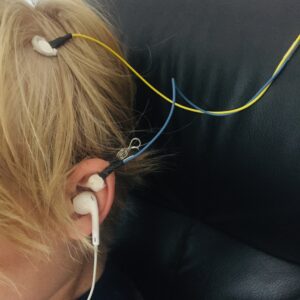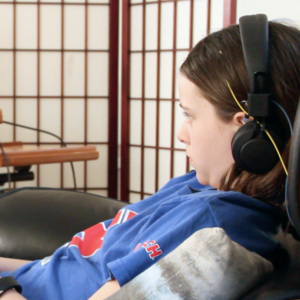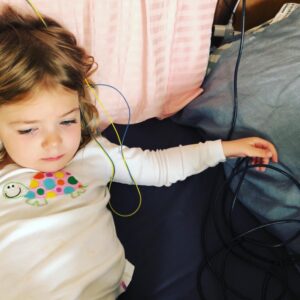Maitri Licensed Mental Health
Call for a free consultation! 1-347-676-0184
Home • About • What is ADHD? • What to Expect • Testimonials
WHAT TO EXPECT
My Results Brain Training with Neurofeedback
By Amy Yuan, NeurOptimal® trainer in NYC
Read neurofeedback trainer Amy’s journey with NeurOptimal®. How it enhanced her emotional resilience, reduced mental rumination, and helped her tap into a higher level of creativity.
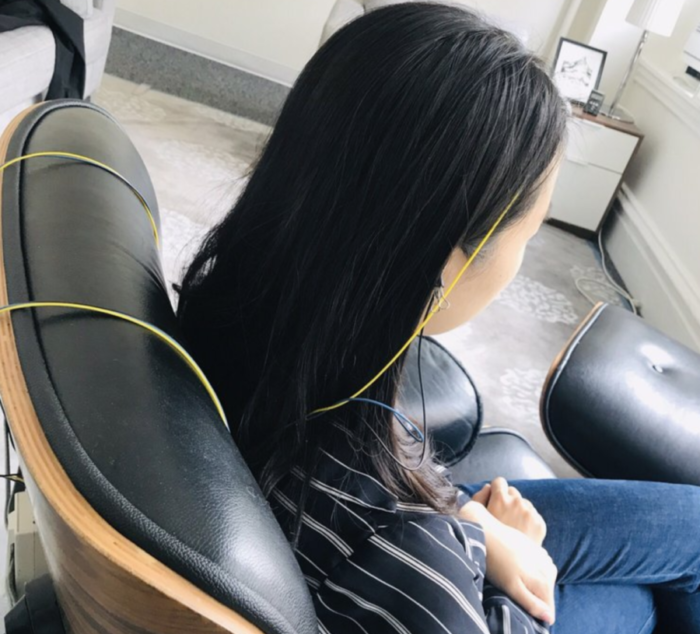
Neurofeedback training has emerged as a powerful brain training tool, with the potential to enhance emotional resilience and cognitive performance. As a NeurOptimal® trainer in NYC, I’ve personally experienced its transformative effects, witnessing improvements in emotional management, mental flexibility, and creativity. In this blog, I share my journey with NeurOptimal® neurofeedback and explore the key benefits of this therapy, shedding light on the remarkable transformations it has brought about in my clients’ lives.
To my delight and surprise, I found training journey with NeurOptimal® neurofeedback is an enriching one, full of self-discoveries and improvements in emotional and cognitive performance. Each 33-minute session offers a unique and transformative experience.
To first say something about the how the technology works, EEG sensors attached to the head and ears collect the electrical communication of the brain and send it to a computer that read brainwaves. (No electricity goes back to the head through the wires.) The system based on thousands of calculations per second, cues the brain whenever maladaptive activity is detected, leading to micro-interruptions in the music. This might sound simple, but these disruptions have profound implications on the brain’s patterns, leading to emotional resiliency, more adaptive behaviors and improved cognitive functions.
I have experienced this firsthand as a NeurOptimal® trainer and trainee. Over the span of several months, I noticed significant changes in my emotional resilience, mental rumination, and creativity. The training allowed me to manage emotions and stress more effectively and to observe thoughts with increased awareness. As a result, my mind became less cluttered, and I was able to tap into a higher level of creativity by breaking away from repetitive patterns.
I’ve also been fortunate to witness transformations in my clients, which align with various research findings presented in the NeurOptimal® community. These include brain fog, PTSD, stress and anxiety, autism, and ADHD, to its applications in enhancing cognitive functions, emotional regulation, and even sports performance.
To date, I’ve seen clients report feeling calmer, more focused, and grounded after the sessions, with the number of sessions needed varying depending on their individual goals. For some, short-term relief was achieved after in-office or renting a home system for 2-3 months, while others with long-term wellness aspirations have continued to train for extended periods.
My journey with NeurOptimal® has not only been a path of self-improvement but has also allowed me to be part of a wider community working towards mental well-being and performance enhancement. By sharing our experiences and insights, we continue to enrich our understanding of the brain and the potent benefits of neurofeedback training.
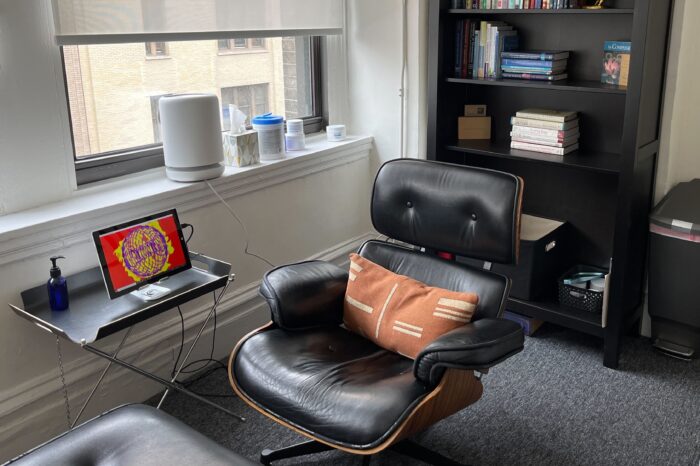
My Experience with the Key Benefits of Neurofeedback Therapy
Regular weekly training over several months with NeurOptimal® neurofeedback has led to substantial changes in my personal development. This therapy has improved both my emotional state and cognitive performance. While the transformation is an accumulation of regular sessions, there are moments, post single sessions, where a shift in my stress response is noticeable. It’s akin to shedding an unnecessary burden and experiencing a surge of relaxation and mental clarity. This resonates with the purpose of neurofeedback, which aims to bring the brain back to the present, discarding any unproductive patterns.
Building Emotional Resilience
Neurofeedback has been instrumental in bolstering my emotional resilience. I’ve noticed that when faced with intense emotions, my ability to stay present and allow the feelings to pass through without getting stuck has improved. This emotional management has enhanced my ability to acknowledge discomfort and observe emotions without judgment.
Furthermore, I feel more grounded and less reactive. Everyday life can throw unpredictable stresses at us – from family emergencies to minor inconveniences like misplacing keys. In such scenarios, neurofeedback has trained me to step back from my immediate emotional responses—anger, sadness, irritability—and assess the situation objectively. This practice of emotional equanimity reminds me of Emily Dickinson’s lines:
“Powder exists in charcoal – Before it exists in fire – “
This encapsulates how neurofeedback allows us to pause and observe our emotions before fully embodying them, leading to a deeper understanding and acceptance of our feelings.
Cultivating Mental Flexibility
I found that neurofeedback encourages the brain to break away from stubborn and repetitive thought cycles. These could be subconscious, emotionally-driven beliefs or over-generalized narratives about oneself and others. By promoting mental fluidity, I found over the series of session that I had a more flexible mindset.
Neurofeedback has helped me to monitor my thoughts, letting them pass with less judgment, and continuously revise the narratives that shape my everyday life. It has made it easier for me to question initial assumptions based on past experiences and consider alternate perspectives. This transformation from reactive to self-aware has helped curb anxious thinking and catastrophizing. Having more mental space allows for the release of unproductive beliefs and fosters compassion and patience towards others and challenging situations.
Boosting Creativity
The biggest surprise for me from training was the transformation in my creativity. It was much easier to come up with innovative solutions to challenging problems. I also found myself less resistant to creative flow and focus.
I am intrigued by the processes of creativity and growth, from observing a client’s progress over time to the manifestation of artistic ideas. Neurofeedback therapy plays a pivotal role in overcoming creative block, which I notice often stems from becoming too attached to a specific idea or emotion. Much like the creative process, neurofeedback involves breaking old patterns to make way for fresh ideas. This cultivation of new thoughts and personal growth paves the way for enhanced productivity, mindfulness, and a greater sense of purpose.
In my journey I have come to experience neurofeedback as a powerful form of brain training, though not a panacea. There are many different tools related to optimal wellbeing: a good diet, sleep, a social circle, having a sense of purpose and more. With the combination of other healthy habits, neurofeedback can help the brain stay sharp and adaptable. The beauty of NeurOptimal® lies in its effortless communication on a physical level, leading to greater creativity, wellbeing, and resilience.
Client Transformations from Neurofeedback Training
I’ve not only observed changes in myself through neurofeedback, but I’ve also seen remarkable transformations in my clients. These individuals seek neurofeedback for a range of reasons, such as managing anxiety, stress, ADHD, depression, sleep issues, recovering from trauma, and improving performance.
Their results have been notable and lasting. Initially, within the first few weeks, clients typically experience shifts in their stress response, such as calm, and cognitive improvements, feeling sharper and finding it easier to stay on task are common. As they continue training over several months with 15 to 40 sessions or more, further improvements in emotional regulation become apparent. This leads to less anxiety, increased relaxation, and improved communication and sleep. The clients also report improved memory retention and longer periods of concentration. Even if clients didn’t come with executive functioning issues, they still tend to report they notice making better decisions with greater ease, having more energy and motivation.
Training Children
It’s incredibly rewarding to observe children transition from initially resisting neurofeedback sessions to actively requesting them. I love it when these children share positive changes like enjoying school more, finding it easier to handle homework, and improving their relationships with siblings. Neurofeedback allows their brains to self-correct without them consciously intervening. This process helps them understand that they were not the problem – it was their brains functioning on an imbalanced auto-pilot mode!
Most clients choose a mix of in-office sessions and home rentals. The latter option offers a cost-effective way to train more frequently at their convenience and even allows family members to train together. Alongside training, I advise my clients to learn about Neurofeedback. Understanding its workings and benefits encourages consistency and motivation throughout the process.
NeurOptimal®, developed by clinical neuropsychologists, Drs. Sue and Valdeane Brown, has a unique feature: it works with the brain without the need for conscious interaction. This non-intrusive feedback is incredibly useful for busy individuals who can undergo a session while at work, or for those who struggle with attention issues. Even individuals who feel “consciously stuck” can use neurofeedback to bypass conscious awareness and expedite changes alongside therapy.
In my past work with adults with intellectual and developmental disabilities, I noticed that they often communicated their needs and feelings non-verbally. This made me appreciate NeurOptimal® even more as it offers wide accessibility for emotional and cognitive wellbeing. It’s not dependent on a diagnosis for successful outcomes and is non-discriminatory in its communication. This implies that as long as one has the sensory capacity to receive feedback, they can benefit from it. The method’s primary auditory feedback is even adaptable for deaf clients, who can experience the interruption in music as vibrations on the mastoid bone.
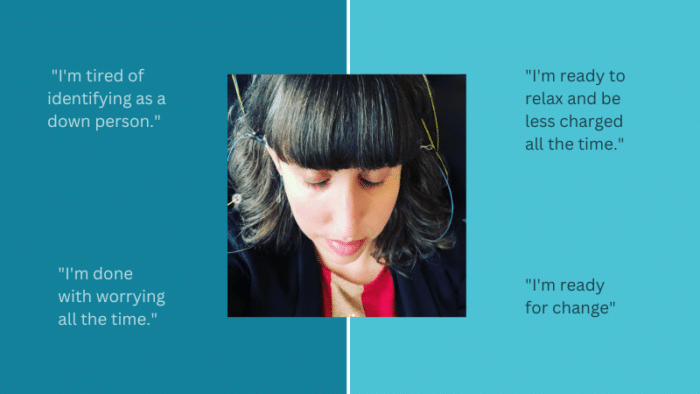
In conclusion, my personal journey with NeurOptimal® neurofeedback training has been a remarkable voyage of self-discovery and growth. Over the course of several months, I’ve experienced firsthand the transformative power of this brain training tool. The NeurOptimal® neurofeedback system has allowed me to enhance my emotional resilience, reduce mental rumination, and tap into a higher level of creativity. Through its non-intrusive and unique approach, this technology has enabled me to manage emotions more effectively, observe my thoughts with heightened awareness, and break away from repetitive patterns.
Witnessing not only my own transformation but also the positive changes in my clients has been truly rewarding. From reduced stress and anxiety to improved cognitive functions and emotional regulation, the impact of NeurOptimal® neurofeedback spans a wide range of areas. The diverse applications, from helping children excel academically to aiding athletes and artists in achieving peak performance, highlight its versatile nature. The personalized feedback and the holistic approach of NeurOptimal® set it apart as an effective brain training tool.
To delve deeper into the potential of neurofeedback training, I encourage you to explore video testimonials showcasing the experiences of individuals who have benefited from NeurOptimal®. These real-life stories offer valuable insights into the profound impact that neurofeedback can have on emotional well-being, cognitive enhancement, and overall quality of life. By embracing this journey of self-improvement, we join a wider community dedicated to unlocking the potential of our brains and achieving optimal mental well-being. Watch these inspiring video testimonials and embark on your own path towards a brighter and more resilient mind.
Take the first step toward a better future for your child.
@ 2023 Maitri Licensed Mental Health, PLLC | 1-347-676-0184
